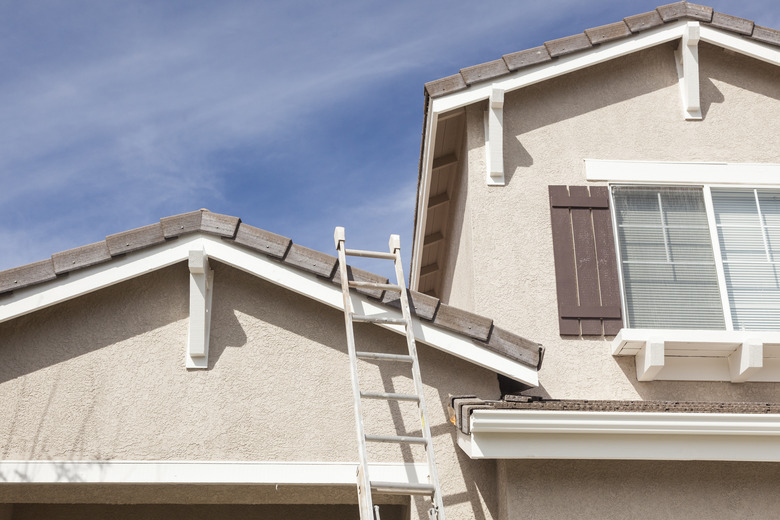How To Replace An Extension Ladder Rope
We may receive a commission on purchases made from links.
A good quality extension ladder can run hundreds of dollars and last a long time if taken care of properly. Upon every use, it is recommended to inspect both the structural integrity of the extension ladder and the rope itself. The rope is used to extend the two ladder sections by use of a pulley system built into the ladders. Sun can deteriorate the rope while it's being transported or stored, and it can break at the worst possible moment. Inspecting and using the right rope can prevent injuries and inconvenience on the job or around the home.
Parts of an Extension Ladder
Parts of an Extension Ladder
The parts of an extension ladder are not that complicated and consist of two sections: the base section and the fly section. The base section stays in place, providing good footing on the ground while the fly section, as you can imagine, is the part that extends to the safe desired height.
The sides that hold the rungs attached are called rails and can be made of aluminum or fiberglass. The rungs serve two purposes: steps to climb on and a place to hold onto while climbing. Rungs are usually spaced every 12 inches. These two sections are interlocked with a rail-type system that allows movement up and down.
The rung locks are the actual safety locks that prohibit the fly section from sliding down while climbing it. These rung locks move and using springs, lock in and out of place while extending the ladder. The extension is controlled by the rope and the pulley. Another safety device is the stop. This device keeps the fly and base sections together while fully extended and stops the two pieces from sliding apart.
Ladder Rope’s Function
Ladder Rope's Function
The rope uses the extension ladder pulley to extend the fly section upward while rung locks secure onto the rungs. With this pulley system, you can extend the extension ladder in increments of 12 inches at a time and almost double the base length of the ladder. Without the rope, the extension ladder is difficult, if not impossible, to extend.
Types of Extension Ladder Ropes
Types of Extension Ladder Ropes
The rope is typically made of a tough polypropylene or woven nylon. The polypropylene is not very flexible, but a good-quality woven nylon may be used instead and provides good abrasion resistance and flexibility. Typical size rope is 3/8 inch, but larger ladders may use 1/2 inch. The best and safest option would be to get the prelooped replacement rope that is specific to your ladder.
Things Needed
How to Rerope an Extension Ladder
1. Position the Ladder for Repair
Set the extension ladder on its side.
2. Remove the Old Rope
Remove the old rope from the extension ladder by pulling the free end through the extension ladder pulley and unlooping the rope from the bottom rung. Cut it free with a knife if necessary.
3. Secure the New Rope
Using the prelooped ladder rope, loop the new rope around the bottom rung of the fly section of the ladder.
4. Install the Extension Ladder Rope
Pass the rope through the pulley on the base section of the ladder. Take care the rope is not passed through any rungs and is free of knots.
5. Secure the Free End of Rope
Wrap the free end of the rope with duct tape to prevent it from fraying.
6. Test the Repair
Place the ladder against a wall and test your work by pulling the free end of the rope. Make sure the extension ladder fully extends.
Tip
If the ladder doesn't slide smoothly, lubricate the guide brackets with oil or other lubricant.
Warning
Observe all rules of ladder safety when using an extension ladder. Falling from the top of a fully extended extension ladder can be fatal.
